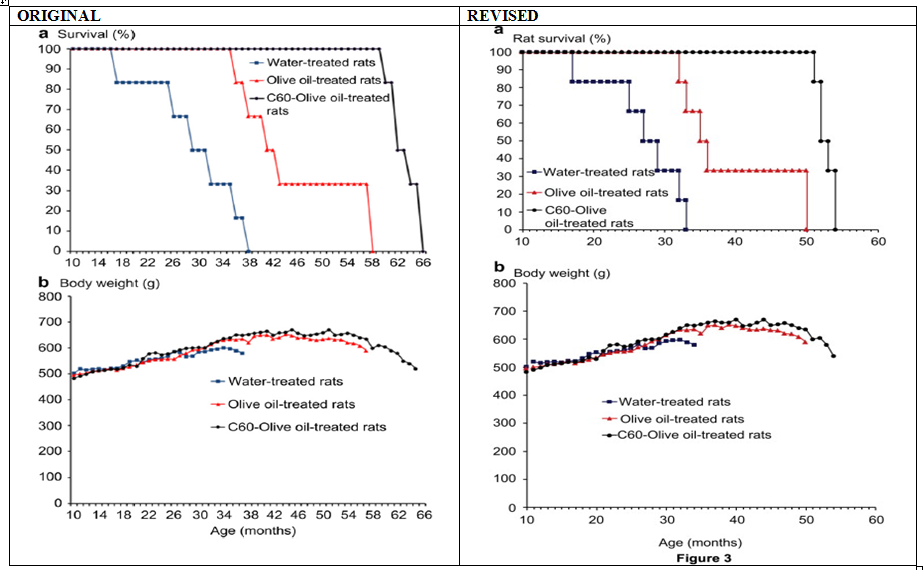Not really.
The lifespan of Wistar Rats is a known quantity.
Per The UFAW Handbook on the Care and Management of Laboratory and Other Research Animals --
The maximum for males is ~1200 days, 38 months
for females Approximately 1400 days -- 44 months
Every single C60-OO rat exceeded the acknowledged Maximum male Wistar lifespan of 38 months by at least 30%
That is a greater than 3 sigma event even with n=6
I am quite sure that there is epidemiological data concerning the mean, median and SD of the strain of mice used in the Ichor study
Well looking at the revised graphs of the Baati study you could also conclude that there is hardly any difference in max life span between olive oil and the C60oo + olive oil so the lengthening of the lifespan is mostly coming from the olive oil. It is then debatable whether C60oo brings some extra benefits in delaying some diseases or whether there was some bad luck in the olive oil n=6 group that caused couple early casualties.
No, not at all.
There is a huge difference -- throw out the outlier, and you get 33 months for Olive Oil and 53 months for C60 OO -- hardly similar
In human terms that is comparable to a group of people living to 112-115 vs another group living to 150-155.
5 of the 6 Olive Oil cohort died months prior to the max lifespan of Wistar Rats (32-36 months) -- number 6 (50 months) is such an outlier (even far outside the maximum lifespan) that occam's razor leads one to posit he was likely fed C60 by mistake, or perhaps his age was measured incorrectly.
What we could reasonably conclude is that Olive Oil helps rats live Close To The Normal Maximum Lifespan for Their Strain and Species , but C60+OO helps male wistar rats exceed the previously measured maximum for their species and strain by at least 30%.
While not scientific in the least , of note is that Marie Calment, the longest lived DOCUMENTED human being (123 years) ate olive oil on her food - supposedly with every meal, and consumed a kilogram of dark chocolate every week. This is a combination of olive oil and strong anti-oxidant
--- much like C60-OO ---
Edited by sensei, 19 January 2016 - 01:19 AM.

























































